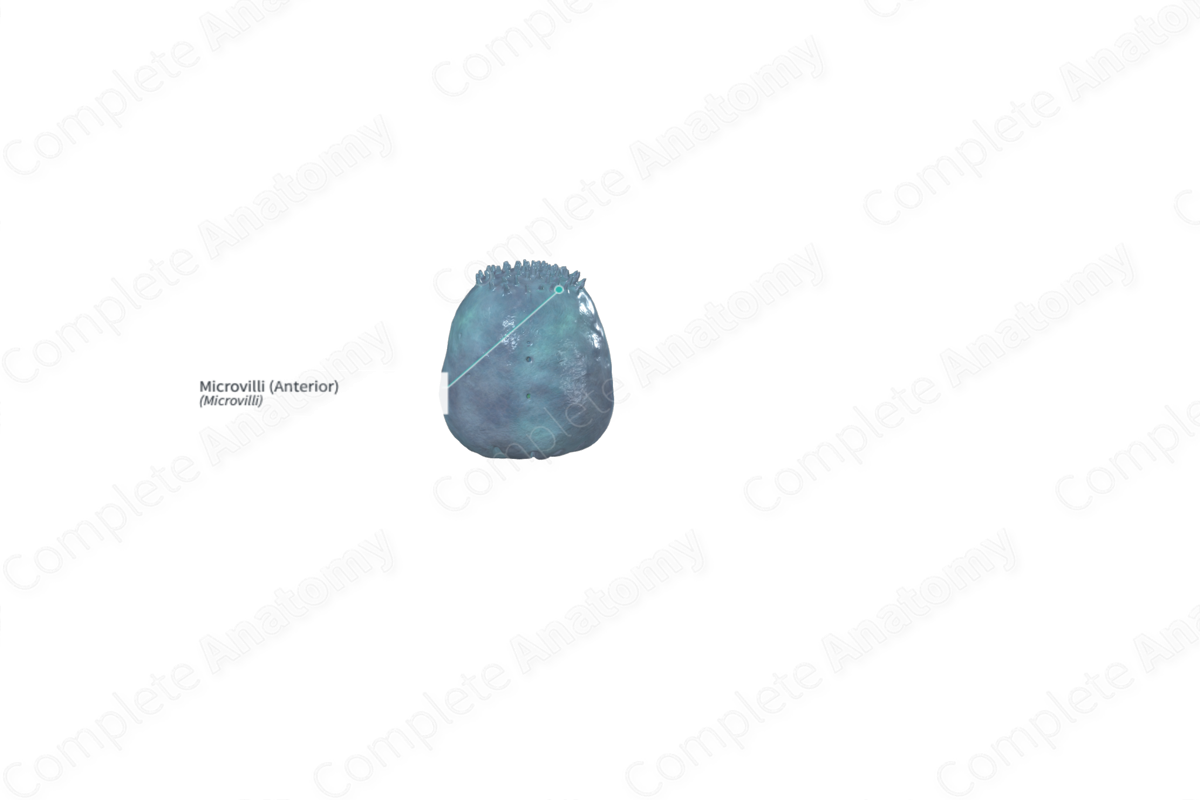
Quick Facts
Microvilli are the minute cylindrical processes on the free surface of a cell, organized around a core of cross-linked actin filaments anchored to the terminal web, which increase the surface size of the cell; found especially in cells of the proximal convolution of the renal tubules and of the intestinal epithelium (Dorland, 2011).
Related parts of the anatomy
Structure and/or Key Feature(s)
A microvillus is an extension of cytoplasm from the apical surface of many epithelial cells. Depending on the epithelial cell, a microvillus may be just a small, irregular-shaped projection, or a very tall projection organized as a numerous, closely packed group, over the entire apical surface of the cell.
Each microvillus contains a core of actin filaments that extends into the apical part of the cell cytoplasm and attaches to a horizontal network of actin filaments called the terminal web. The molecule myosin binds the actin filaments to the plasmalemma of the microvillus.
On some epithelial surfaces, when microvilli are numerous and closely packed, they are often referred to as a striated or brush border (Ross and Pawlina, 2006).
Anatomical Relations
A microvillus is an extension of cytoplasm from the apical surface of many epithelial cells.
Function
Microvilli increase the surface area of the cell and so increase the absorption capability of the epithelial surface. The contractile ability of the terminal web can cause the intermicrovillus space to widen and further increase absorptive capacity (Ross and Pawlina, 2006; McKinley, O'Loughlin and Pennefather-O'Brien, 2016).
References
Dorland, W. (2011) Dorland's Illustrated Medical Dictionary. 32nd edn. Philadelphia, USA: Elsevier Sauders.
McKinley, M. P., O'Loughlin, V. D. and Pennefather-O'Brien, E. E. (2016) Human Anatomy. 5th edn.: McGraw-Hill Education.
Ross, M. H. and Pawlina, W. (2006) Histology: A text and atlas. Lippincott Williams & Wilkins.
